Is This Van Gogh’s One True Love? Sketches of Sien
Vincent van Gogh produced dozens of sketches of his live-in lover Clasina Maria Hoornick, known as Sien. Let's take a look!
Candy Bedworth 31 July 2025
Kisses have long been a symbol of love, passion, and intimacy, and artists throughout history have captured these moments in their work. From tender embraces to passionate lip-locks, the depiction of kisses in art transcends time and culture, evoking deep emotions and storytelling. In this article, we will explore some of the most iconic kisses in art, delving into the stories behind these famous images and the artists who created them. Join us as we take a closer look at how these intimate moments have been immortalized on canvas and beyond.
The truest nature of a kiss is considerably vast in its meaning, and the works of art that portray kissing are even more so.
The theme of the kiss in art spans history, cultures, and various mediums—including film and photography—featuring works by well-known artists and the relatively unknown. But why is the kiss so enticing to artists? Is it because a kiss evokes powerful emotions, stirring something profound within us? An image of a kiss opens a world of questions: Are the figures secret lovers? Is it a friendly peck? Is it a kiss of death or a kiss of life? Amidst all these questions, one thing holds true: the kiss remains one of the most prominent and evocative themes in art.
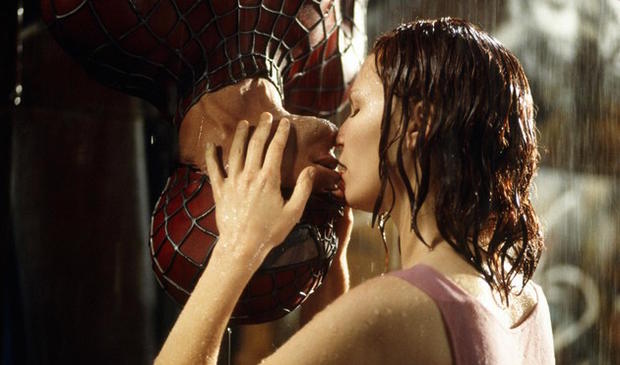
The same can be said for artworks. What follows is just a glimpse of the plethora of paintings in art history that depict a kiss.

Francesco Hayez’s painting is one of love and passion, both for another and for the country. This seemingly simple gesture of the two figures embracing is filled with more symbolism than not. The colors of the clothing, and the simplicity of the work; it is one of the most replicated paintings on the theme.
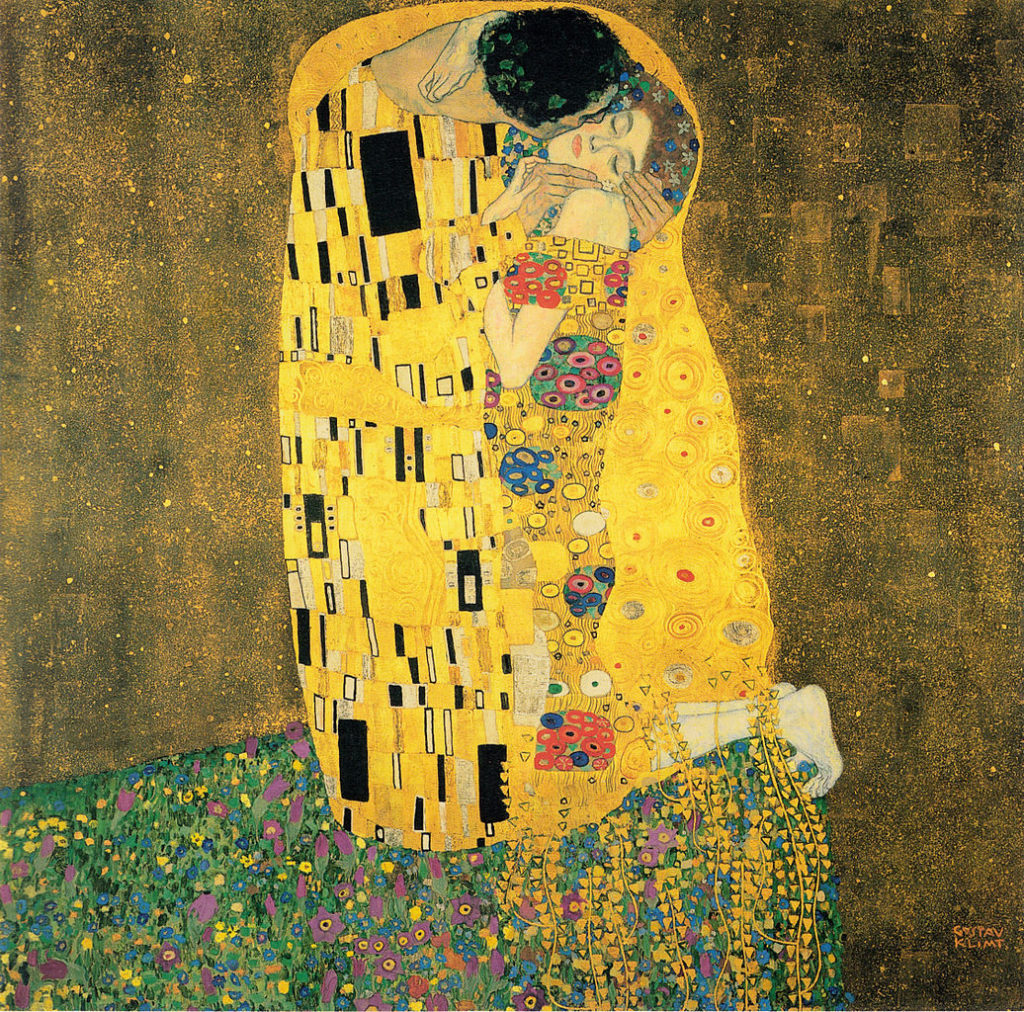
Perhaps one of the most well known examples of kissing in art, Gustav Klimt‘s passionate painting is beautiful in its distinctive Art Nouveau style. We see here a couple kneeling in a patch of flowers; the boundaries of their respective bodies are not completely defined, almost as if they are one.

This is just one of the many paintings of Bohemian Paris in the late 19th century. It is one of several in a series of paintings where Toulouse-Lautrec focused on the more intimate details of the lives of these women and others around them.
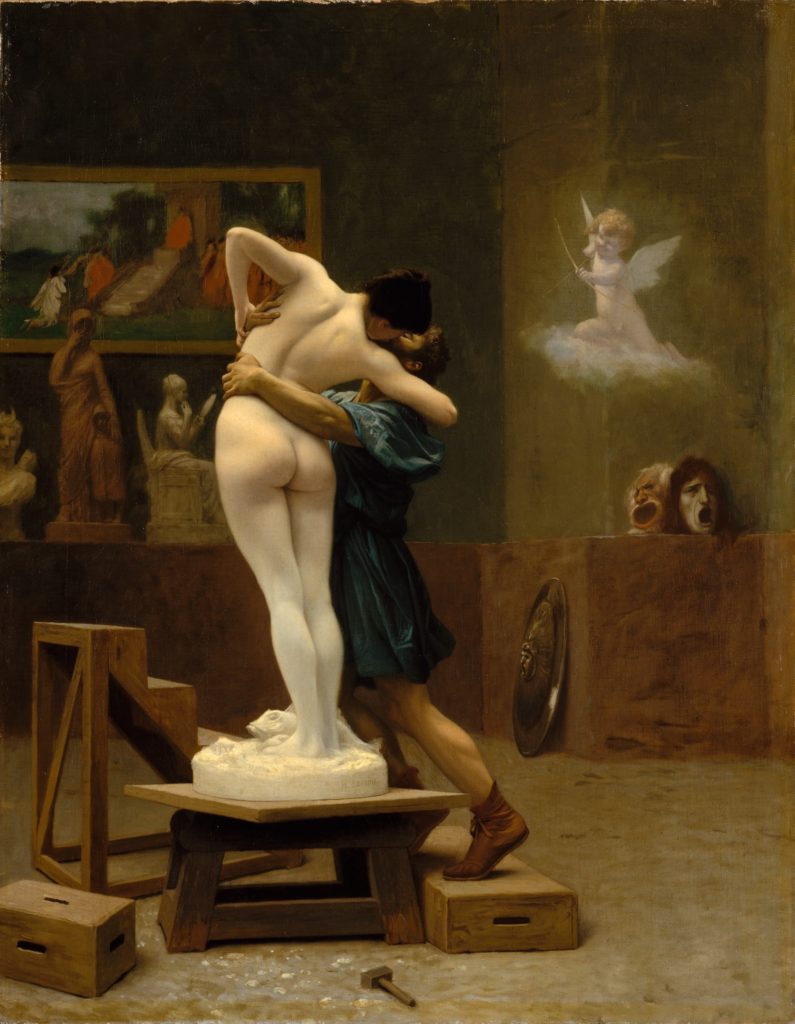
At first glance you can see two figures in embrace, kissing each other passionately. But upon further inspection, we see that the female figure is a statue come to life. The pair of Pygmalion and Galatea are centered in the middle of an artist’s studio. Gérôme focused on the story from Ovid’s Metamorphoses for varying renditions of this piece. Both in sculpture and paint.
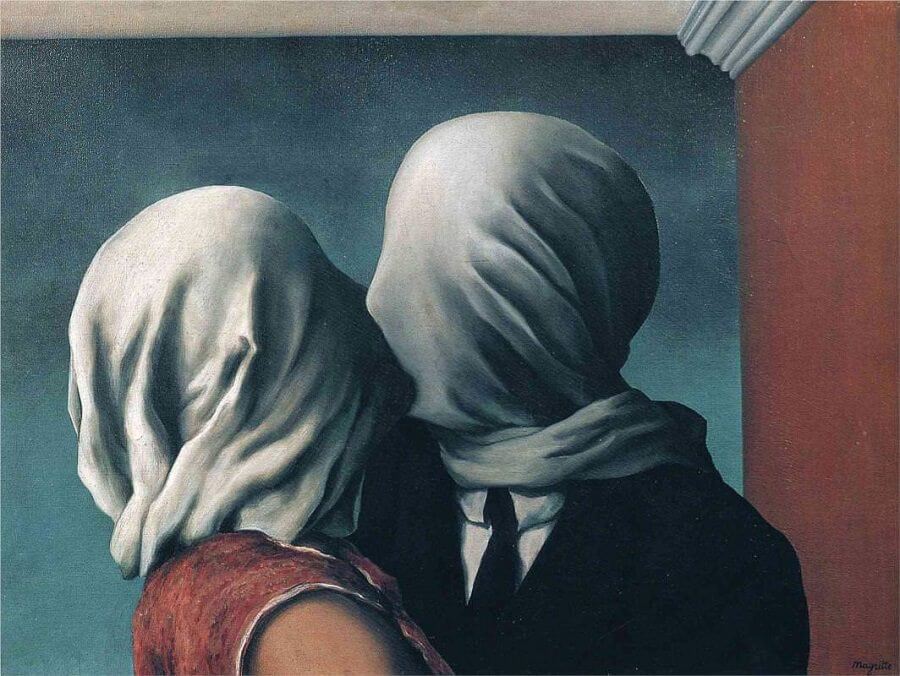
What attracts viewers to this painting may be Magritte’s typical covering of the face. Why has he chosen to cover the faces of these figures? They appear in mid-kiss, but their lips aren’t actually touching due to the fabric. Perhaps a frustrating kiss. Again, this is just one of many paintings where the artist chose to focus on kissing. Not only is it mysterious, but unlike Klimt’s The Kiss, Magritte places his pair in a concrete setting, that of a room.
You must remember this: A kiss is still a kiss.
Casablanca, dir. Micheal Curtiz, 1942.
A kiss can have various meanings depending on the location. This painting depicts a young girl kissing another on the cheek. It is sweet and endearing; far from the sensuality of the previous paintings.

A kiss can have various meanings depending on the location. This painting depicts a young girl kissing another on the cheek. It is sweet and endearing; far from the sensuality of the previous paintings.
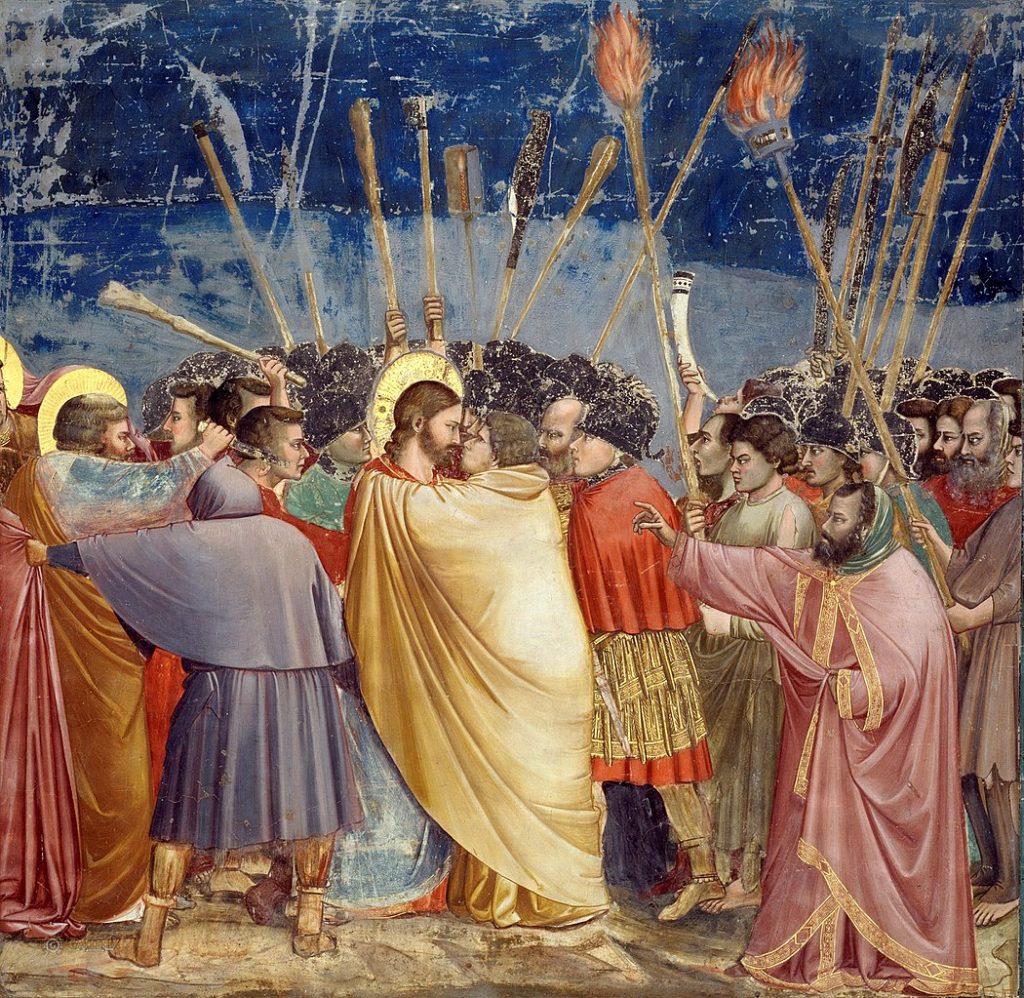
Giotto‘s Kiss of Judas (1304-06) is an example of when a kiss means something more than love or respect: betrayal. The apostle kissed the man known as the Messiah in the New Testament of the Christian bible in order for the guards to identify him.
DailyArt Magazine needs your support. Every contribution, however big or small, is very valuable for our future. Thanks to it, we will be able to sustain and grow the Magazine. Thank you for your help!